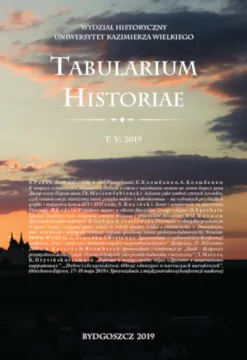К вопросу о денежном обращении Ольвии в связи с находками монет на левом берегу реки Днепр возле Переяслава
DOI:
https://doi.org/10.34767/TH.2019.05.02Abstrakt
Numismatic records are one of the most informative categories of archaeological finds on the territory of the historical Pereiaslav region (left-bank of Kyiv region and Cherkasy region). The most common coins found here date from 16–18th centuries, as well as from late Roman and ancient Rus times. Such coins are prevalent both among random finds and during archaeological explorations and excavations. But sometimes there are numismatic records of other epochs on this territory; its presence may seem somewhat unusual on these lands at first sight. Such a response may be evoked with the find of four Olbia bronze coins «Borysthenes», discovered during 2011–2019 on the territory of Pereiaslav region. Moreover, three such coins were found during archaeological excavations on the territory of the Museum of Folk Architecture and Way of Life of the Middle Dnieper Area in Pereiaslav-Khmelnytskyi. Discovery of these coins near each other in the damaged cultural layer with the materials of the Chernyakhiv culture and Old Rus time indicates that in the first half of the 3rd century BC these coins were hidden here as part of treasure scattered in subsequent epochs. These coins have a special place in Olbia numismatics due to widespread distribution of «Borysthenes» within the Olbia polis like a large number of their finds outside of it. It was the most common Olbia coin of the Hellenistic time. There is no other Olbia coin of this era which is represented with so many finds, as a rule there is only one Olbia coin «Borysthenes» in regions remote from the Northern Black Sea region. The findings of Olbia coins, as well as the materials of archaeological research of Pereiaslav region of the last twentieth anniversary confirm the fact of existence of certain trade and economic contacts between the population of this region and the ancient cities of the Northern Black Sea region, the most important of which was Olbia.

